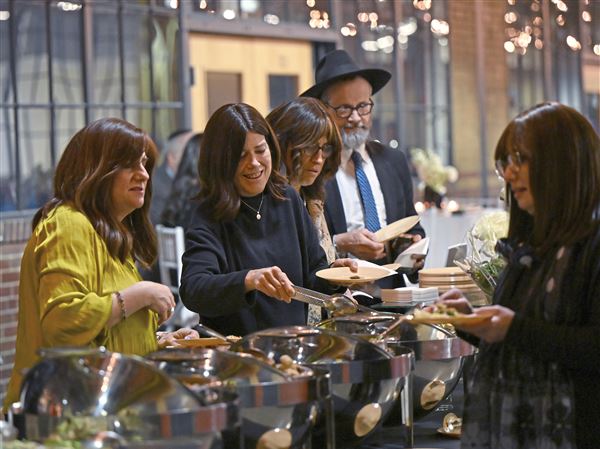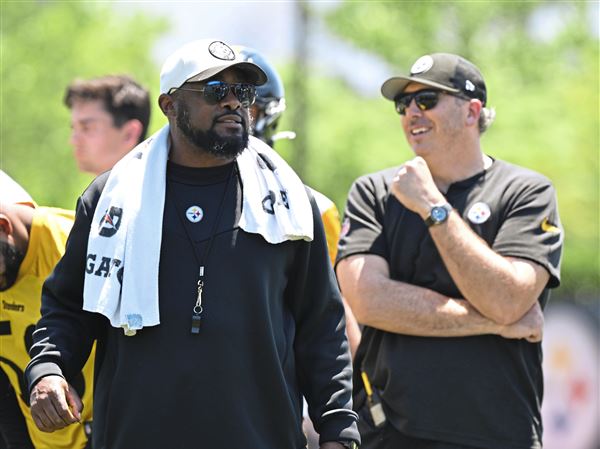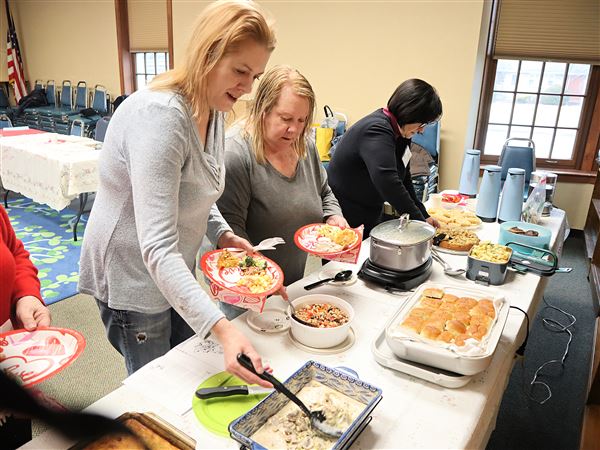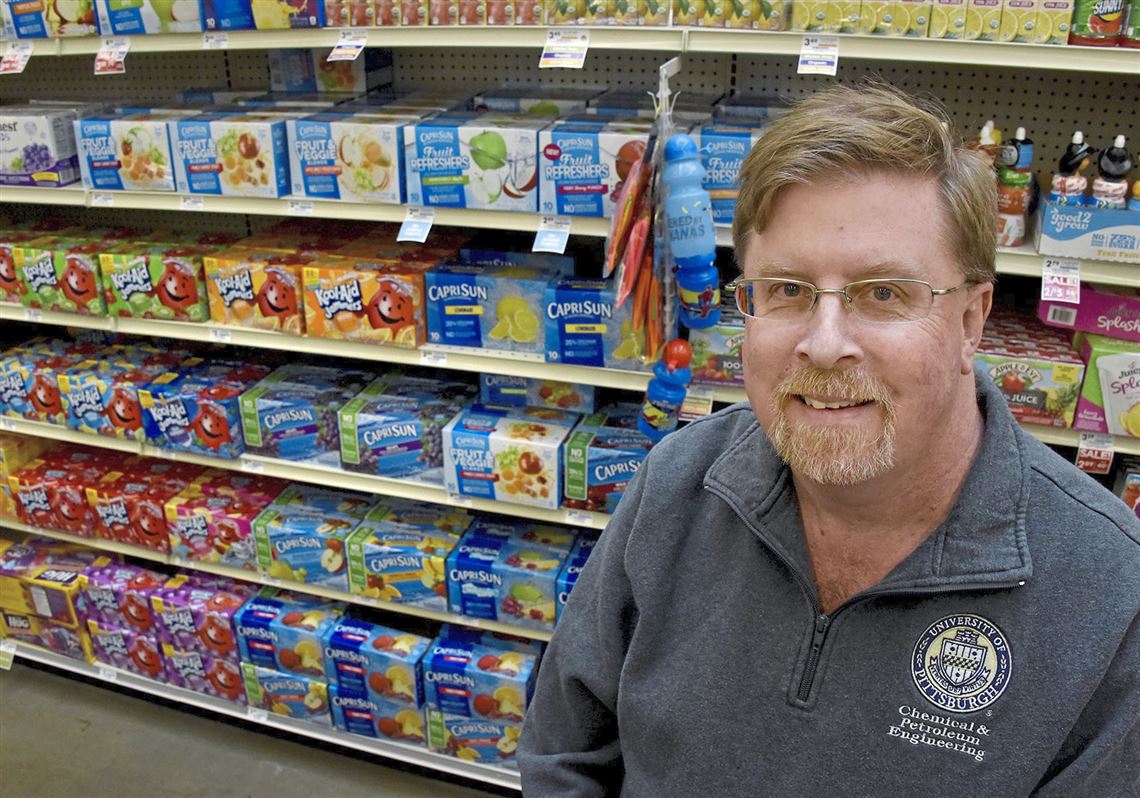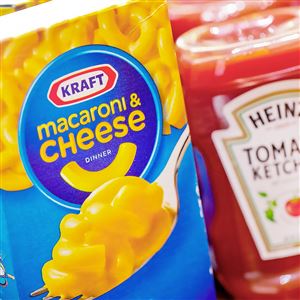If you’re throwing the kids’ Wild Cherry Capri Sun pouches into the recycling bin, you’re not alone. But once the juice is drained from the flexible foil packaging, it’s off to the landfill forever.
That’s because the popular German beverage brand is one of many products that use complex multi-layered packaging to keep the contents of each pouch fresh and self-stable.
Layers of plastic and metal are bonded together in a way that makes them impossible to separate, even at a recycling facility, said Eric Beckman, distinguished service professor at the University of Pittsburgh’s Swanson School of Engineering and co-director of the school’s Mascaro Center for Sustainable Innovation.
“Each year in the U.S., we use over 4 million tons of this multi-layer packaging,” he said. “The multiple layers work like a charm, but you can’t recycle, so they wind up in landfills or floating in the ocean and they’ll never degrade.”
Mr. Beckman is behind an effort to reduce mammoth garbage patches in the ocean and recently won $200,000 in grant money from the Ellen MacArthur Foundation to create a prototype for recyclable packaging.
His methodology: Avoid the need to separate each layer by designing each stratum of the packaging from one type of material — polyethylene, the most common type of plastic.
Mimicking nature
Holding an Aquafina water bottle, Mr. Beckman explains that the plastic container is really three different materials.
The bottle is a polyester; the cap and label are either a polyethylene or polypropylene.
After consumers toss the bottle into the recycling bin, the components are ground up and placed in water to separate the bottle, which sinks, from the cap and label to be reused.
That’s not the case in multi-layered laminate packaging, he said.
If, say, a juice pouch, ketchup packet or toothpaste tube is ground up, its layers are still stuck together with an adhesive.
The outer layer provides strength and heat resistance. The next layer protects against light and gases such as oxygen. The layer that contacts food protects the product from water, which would effectively rot the contents of the package.
Packaging typically includes multiple materials, including a thin layer of aluminum to keep out oxygen, Mr. Beckman said. Around 13 percent of today’s packaging is produced this way.
Companies often prefer this form of packaging because it’s light, reduces shipping volume and is easy to print graphics onto.

Packaging such as juice pouches are made with bonded layers of metal, such as aluminum, and different types of plastic, making them almost impossible to recycle. Because only 1-3 percent of such packaging is collected for recycling, food and beverage containers are among the top five items found on beaches and coastlines. To solve this problem, University of Pittsburgh researchers propose manipulating polyethylene molecules to design layers that can each perform a specific function, creating a fully recyclable product. (Illustration courtesy of Henkel Diagrams)
To reduce waste, Mr. Beckman and Pitt professors Susan Fullerton and Sachin Velankar pitched an idea for multi-layered packaging that used only polyethylene plastic so that all of the material can be ground, melted together and reused.
“Nature doesn’t have a lot of building blocks that are allowed,” Mr. Beckman said. “It’s a much smaller set of Legos than those of us in the synthetic community have, and nature has built all sorts of amazing things.”
In pitching to the international Circular Materials Challenge, an innovation prize funded by the Ellen MacArthur Foundation to make all packaging recyclable, he realized that a complete overhaul of the recycling industry wouldn’t be vital.
“If we propose to create a whole new recycling system, they’ll never buy that.”
His team plans to use nano-manufacturing, a way to produce structures at the tiny nano-scale, to create layers of polyethylene that will mimic other material. A nanometer comes in at 1 x .000000009 meter.
The foundation awarded five teams $200,000 each. Other solutions include a magnetic additive that can be applied to a material, creating better insulation while also making it possible to sort the layers; a compostable multi-layer material that can be used for things like muesli, dried fruit and rice; and a biodegradable coating.
Fighting ‘Big Plastic’
Laminate packaging has become an albatross for corporations in the food industry, with shareholders demanding more sustainable packaging as the firms look for cost-efficient solutions.
New York City-based Colgate-Palmolive announced in 2014 a set of goals intended to make products like toothpaste tubes completely recyclable by 2020 after shareholder advocacy group As You Sow filed a resolution asking the company to consider more environmentally friendly packaging.
Frito Lay, headquartered in Plano, Texas, uses multi-layered packaging in its potato chip bags. Parent company PepsiCo said last week that it has created a biodegradable film for its chip bags, following seven years of work with Danimer Scientific, a biopolymer manufacturer headquartered in Bainbridge, Ga.
And shareholders of Kraft Heinz, dually based in Pittsburgh and Chicago, demanded a sustainability report last March. Kraft Heinz is the production partner for Capri Sun, a German brand.
According to a proxy filed with the Securities and Exchange Commission, shareholders suggested that Capri Sun drinks could be dispensed in recyclable PET containers (polyethylene terephthalate plastic, the same plastic used in water bottles) or glass bottles, paper cartons or aluminum cans as are the Coca-Cola Co.’s Minute Maid and Nestle’s Juicy Juice brands. They note that each year about 5 billion units of Capri Sun are sold worldwide.
In response, Kraft Heinz released its inaugural Corporate Social Responsibility Report last year. It addressed packaging, touting the company’s propensity to design packaging made of recycled materials and labels that instruct consumers how to responsibly dispose of wrappings.
Michael Mullen, senior vice president of corporate and government affairs for Kraft Heinz, said the company takes a comprehensive approach to packaging products, resulting in less waste and better conservation of natural resources.
“We are continuously exploring packaging options with our suppliers for products that utilize multi-layer laminate packaging,” he wrote in an email.

Eric Beckman, a professor in the chemical engineering department at the University of Pittsburgh, holds an example of fruit drinks in which the weight was reduced in the packaging. Mr. Beckman was recently awarded $200,000 to create a prototype for a new type of plastic packaging that would reduce waste in the ocean. (Darrell Sapp/Post-Gazette)
Commercializing the impossible
Mr. Beckman selected a solution to nonrecyclable laminate packaging that wouldn’t disrupt the manufacturing process.
As he works on his polyethylene multi-layered packaging solution, he draws from experience at his past startups, including Cohera Medical, which recently relocated from Pittsburgh to Raleigh, N.C.
But as for business models, Mr. Beckman believes the best way to commercialize this endeavor will be as a license or a strategic partnership.
That’s due to the scale of the project, he said, comparing it to the battery business. Once those startups reach a certain scale, he said, they can’t find funding to continue growth.
Mr. Beckman said he has been contacted by firms interested in partnering.
He credits this, in part, to the 12-month accelerator he has joined with the other winners. It’s in collaboration with Think Beyond Plastic, a group that advances commercialization of research and innovation for the plastics economy.
Through the accelerator, he hopes to make connections with people that make the base resins in plastic as well as companies directly involved in packaging.
While the project will be daunting, especially in the early stages as he builds a team, Mr. Beckman said he didn’t believe he had a shot when he applied to the foundation.
“Doing something that is inherently recyclable is hard, and it sometimes seems hopeless,” he said. “But 10 years ago if I said, ‘Oh yeah, we’re going to have cars that don’t need drivers motoring around Pittsburgh streets,’ you’d say, ‘Well, that seems impossible.’
“I think anything that’s going to change the way we do business will seem impossible at first blush.”
Courtney Linder: clinder@post-gazette.com or 412-263-1707. Twitter: @LinderPG.
Join the Tech.pgh Community!
Sign up for Courtney Linder's free newsletter.
First Published: March 13, 2018, 11:30 a.m.


